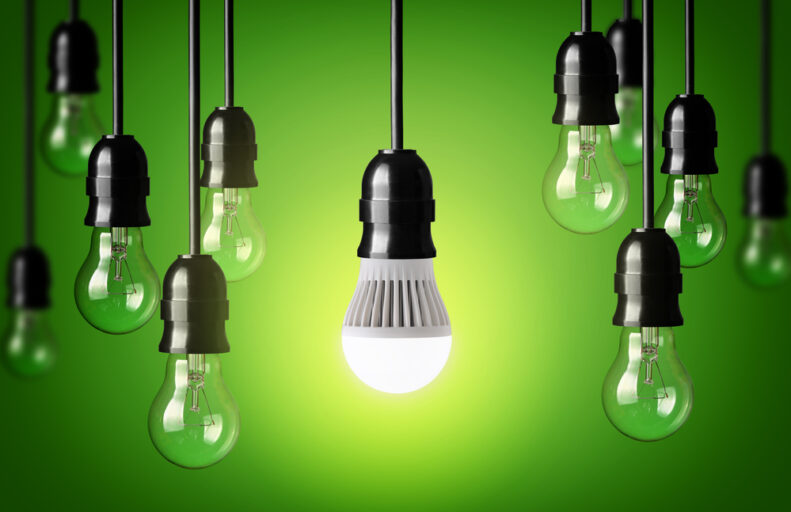
The Heart of Hotel Energy Management
Welcome back! In the first article of this series the relationship between hotel energy management and hotel enterprise asset management was examined. The results revealed the necessity of having a good asset management program in place if a hotel is to lower energy costs.
This article will pick up where Why Hotel Energy and Asset Management Got Married left off and provide insight on how to set up a good hotel energy management program.

Hotel Energy Planning
Creating a sustainable hotel energy program requires careful planning. Each plan should consist of phases for data collection, asset energy review, establishing a quantifiable goal, action plans and evaluation. For the purposes of this discussion the following terms have been defined:
Key Energy Terms
- Energy efficiency: Is the percentage of total energy input to a machine or equipment that is transformed into in useful work. All machines are inherently inefficient to some degree. Energy efficiency is reduced when equipment is not maintained in optimal working order.
- Commissioning: Commissioning is a process during which engineers observe and adjust assets to ensure they are operating as planned. Commissioning typically takes place when a hotel is first built.
- Retrocommissioning: Retrocommissioning is essentially going back after the initial commissioning and giving equipment a tune up or adding improvements to improve energy efficiency.
Phase I – Data Collection
There are a lot of variables that go into the planning and for this reason all asset attributes for current and planned assets need to be collected and organized. The information gathered should include data such as location, condition, purchase date, useful lifecycle, work history, vendors contracts and so on. The collection of asset detail also applies to any asset that can influence power consumption such as roofs, windows and doors.
In addition to the asset detail, energy use information must also be collected. This data may come from energy bills, monitored metering or other form of energy use tracking. Data is needed for any equipment that draws or distributes power
Phase II – Asset Energy Review
Once asset detail has been collected the next step is to review each hotel or site and associated assets for energy efficiency. Each site and asset should also be reviewed to make sure they are at their commissioned (or better) energy efficiency levels and are compliant with any regulations.
Energy usage data should be analyzed and evaluated for energy use patterns and trends. Baselines should be established in order to determine the starting point for measuring success against the goals.
Phase III – Quantify the Objective
This is the true purpose of the hotel energy plan. Each site/asset now has a baseline of performance. Data can be compared between hotels or within the industry and asset managers should have a realistic concept of the amount of energy that could be saved. Performance improvement goals are set such as a 10-15% reduction in energy costs.
Phase IV – Action Plans and Evaluation
With the hotel asset data and energy objectives in hand the nest step to create an action plan based upon the resources available. The resulting hotel energy plan should include at a minimum:
- 30,60,90,180 days action steps as well as longer term plans for 1,3 and 5 years. This includes what will be done and who will be held accountable.
- Anticipated savings broken down by technology enhancement and system changes. Savings should be detailed by action and not a generic wishful statement.
- Benchmarks.
- A breakdown of the technology enhancements that will be employed. For example; how many occupancy sensors, program logic controllers, power management monitors and power distribution boards will be used and where they will be used.
- Identify and procure resources needed for implementation including staff expertise, software, hardware, firmware and outside consultants (if needed).
- The implementation plan for asset and maintenance management changes. For example; implementing a hotel EAM for the organization, control and scheduling of all maintenance activities to keep equipment optimized and facilities.
- Plans for the retrocommissioning of existing assets or the commissioning of new assets (using an EAM).
- Establishing standard operating procedures once the desired results are obtained.
- The evaluation and consolidation of energy suppliers.
- A budget that covers, labor, technology, maintenance, repairs, improvements, capital expenditures and EAM software. The budget should clearly set the expected ROI.
- The periodic review of results and adjustments.
Once success has been achieved the plan can then be set as a standard operating procedure for multiple sites within larger hotel organizations. Care should be taken to keep the energy plan flexible enough to accommodate the fact that a single plan does not account for an individual hotel’s asset detail (condition of, location, age, maintenance history etc.).
Selected Checklist for Energy Management
Two of the critical elements in a hotel energy program are inspections and the maintenance of high energy consuming equipment. Inspections are performed to ensure equipment is operating as intended and to identify potential problems before they become emergency repairs. Maintenance is the actual care or assets ranging from preventive to reactionary.
Both maintenance and inspections should always be a scheduled activity. Scheduling the work using EAM CMMS is preferred because maintenance management can have staff utilize mobile devices to perform preventive maintenance, inspections and the completion of any work order. This use of mobile devices enables work to be distributed, completed and transmitted without an office visit but more importantly it provides proof of presence to ensure work is done.
An integral part of most maintenance is the use of a checklist. The checklist provides maintenance staff with a series of tasks to be completed and signed off on. The following is a quick snapshot of the types of items that should be on checklists for high energy use assets such as HVAC/Chillers, lighting, boilers, and miscellaneous services.
HVAC and Chillers Checklist
- Check the temperature and humidity of various locations.
- Check ductwork and airflow, sealing leaks, changing filters, checking insulation.
- Check the condition of doors and windows, sealing leaks, weather-stripping.
- Check condensers, cleaning condenser coils, changing filters.
- Check for obstructions, unusual sounds, leaks.
- Check chiller set points, suction and discharge pressure, amperage, leaks.
- Check for pipe and valve corrosion, icing, insulation.
Boilers
- Inspect doors, clean and vacuum surfaces.
- Inspect refractory, gaskets.
- Check seals, replace as necessary.
- Remove plugs, clean and reinstall.
- Flush boiler for scale and sediment.
- Check fuel source and fittings.
- Clean burner and pilot.
- Inspect motor, damper, blower and all safety components.
- Check manhole plates, feedwater tank, clean.
- Check ventilation, support equipment.
- Check for unusual sounds, pressure leaks.
- Confirm water has been heated to ASHRAE standards.
Lighting
- Check lighting timers, occupancy sensors, lighting levels.
- Inspect for failed lights, missing bulbs, replace as necessary.
- Clean lamps and fixtures.
- Check operability of switches.
- Replace lighting with more energy efficient bulbs.
- Check hallways, rooms, parking areas and common areas.
- Check for unusual humming, smells and ballast issues.
Guest Areas and General Facilities
- Inspect bathrooms for leaks, exhaust fans and lighting.
- Check pool and spa equipment settings.
- Check pool and spa temperature settings.
- Check kitchen fuel piping and fittings.
- Inspect kitchen equipment (broilers, grills, exhaust hoods, heating lamps, dishwashers, dryers).
- Check cooler temperature settings, ventilation and seals.
- Inspect laundry equipment for leaks and operating condition.
- Inspect roofs and exterior walls for damage.
- Inspect elevators.
Hotel Energy and Asset Management Summary
The intent of this 2-part article was to demonstrate the relationship between hotel energy management and asset management. Clearly. if a hotel or lodge wants to control and reduce energy costs then they must have in place a quality asset management solution.
Hotel energy management is highly dependent on keeping assets in optimal working condition and knowing when technology adjustments or asset replacement is needed. An Enterprise asset management (EAM) system is the ideal fit for hotel energy management because it provides the tools necessary to expedite and achieve the desired ROI.







